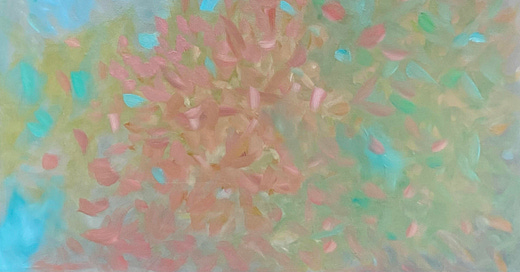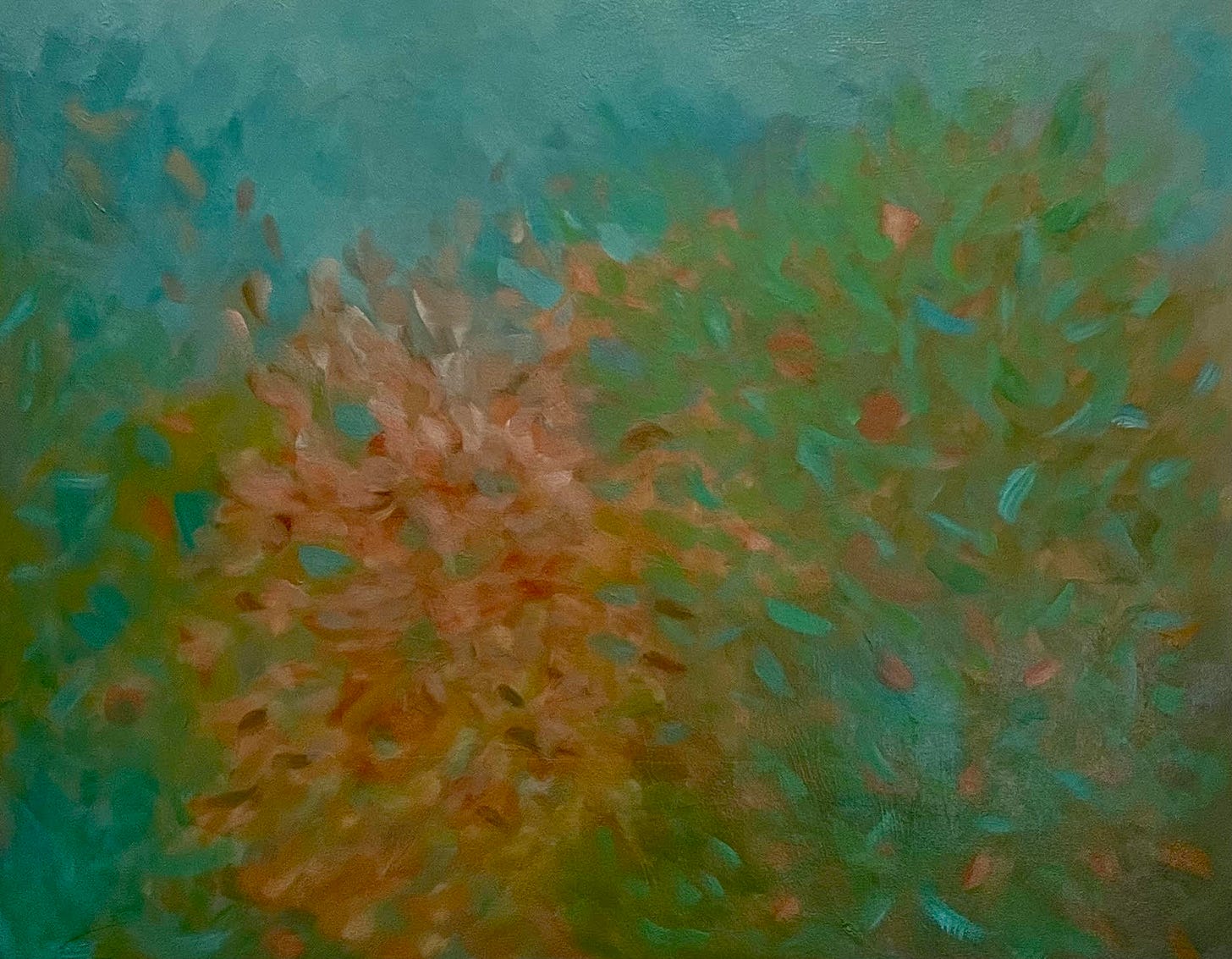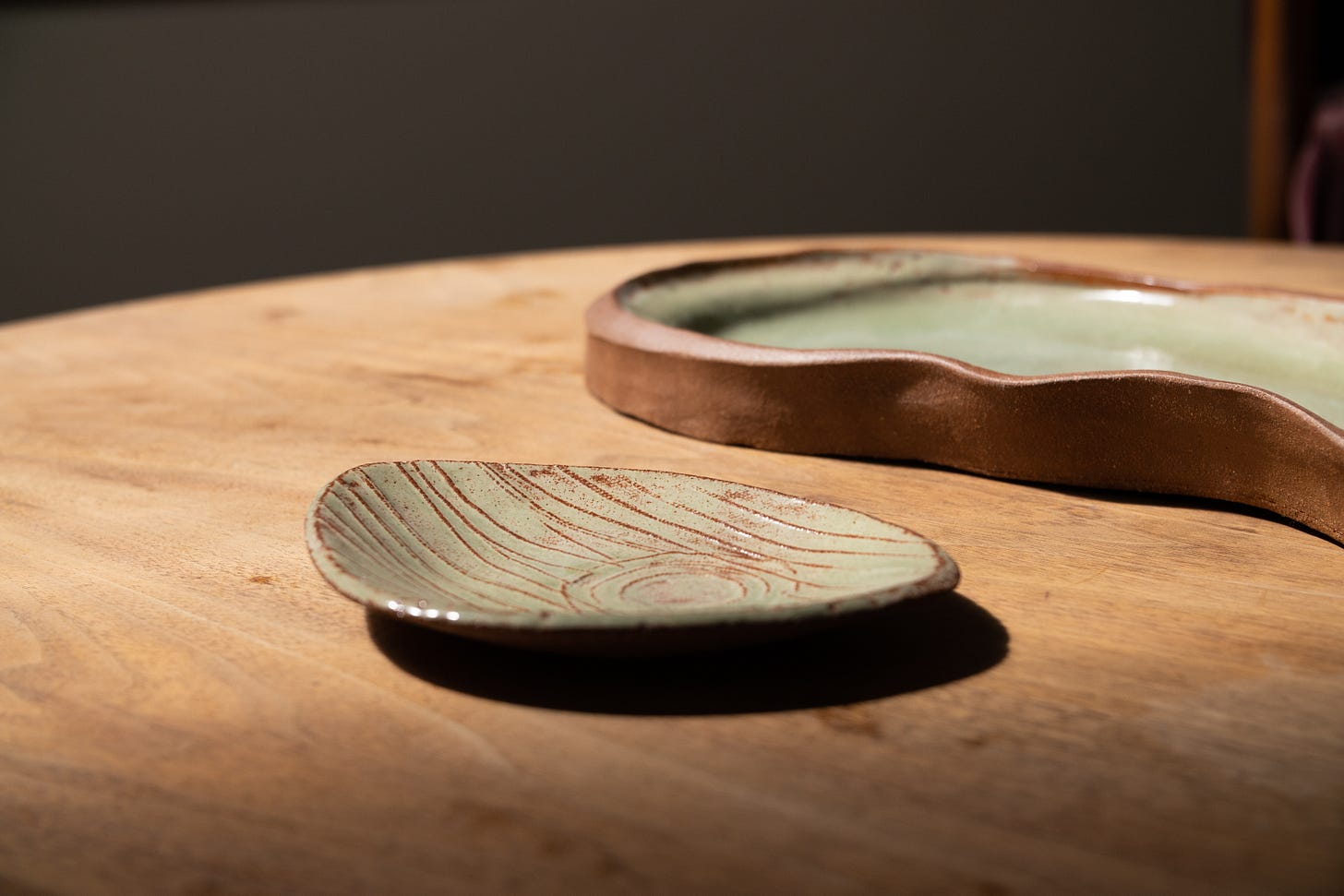Japanese Maples
When my painting works the best, I enter a flow state. It feels both contemplative and mysterious. In this state I am not thinking with my usual mind; my brush is fluid and exploratory. I am listening to something deep within me that gently guides my movements. My painting becomes very dance like, as if I am a child listening to music. Later, I shift into a different mind. I stand back, and as I do so, the critic enters and I view my painting as if I have not seen it for a long time. I am back from vacation looking at where I went, and wondering if I can go there again.
My critical eye does not introduce fault. There is no “good” or “bad”. Rather, I bring back the criteria of composition (something I am not very good at) and I remember that I have to consider values; the way the colors work with each other.
The “rules” that the viewer brings to a painting are so different than what the artist brings. The artist has been in a dream, but the viewer wants a story.
Without stories
we find it hard to access the meaning of our lives. There are stories within stories. Stories that limit us, that shape us, that help us find freedom. The journey of awakening is a kind of story, a helpful one. Seekers want to wake up in this lifetime, but what is it to want such a thing? It makes no sense for the ego, that is, the little self, to desire its own end-because, after all, that is what waking up brings; the end of the centrality of this one; the one you take yourself to be. It would be better to say that what this one desires is the end of suffering.
Some stories are origin stories; private cosmologies that describe the beginning and the trials of our lives. Many people picture themselves as injured. The injury has a source, usually in other people, and serves as a kind of explanation for what is wrong with life. People can be strangely attached to their injury story. Without it, they may feel lost, disoriented. The funny thing is, the sense of injury can be entirely unnecessary. When you see a three legged dog chasing a frisbee, you see the lack of a leg but no sense of injury. There is the fact of three legs. Having three legs does limit the dog’s abilities, but does not necessarily alter the dog’s experience very much. This is the miracle of not living within a story of injury.
In my story of being an artist I am searching for something. That which I am searching for seems to come from within me but I am not the source of it. I do have the power to recognize what I am searching for when I find it on the canvas. To recognize is to recollect, in the Socratic sense, something that I have always known. I can re cognize, that is, see again, a truth that is within or around me, but I cannot originate that truth because I am a passage way of its appearing and not, at least at first glance, the source of the appearing.
The parallels
between artistic inspiration and spiritual inspiration are probably the biggest driver of the exploration that I work with in this newsletter; Inner Art - Mysticism and the Creative Process. Although it is common to speak as if “I” made this, “I” painted this, do we really think we are the source of the ideas that arise for us? Are we the source of them anymore than we are the source of the color of our hair? The creative process is mysterious. It is also work, requiring discipline. And it is play, requiring surrender. Some special combination of these factors sometimes yields art.
I will never forget scene with a student during one of my creative process groups many years ago. There were several of us working on projects in my art studio. I found her sitting, just like a young child with her legs in a wide V on the floor. In front of her was a sketch filled with chaotic colors in almost random patterns. I commented to her that she looked like a gleeful child. She replied that that was how she felt, and how she wanted to feel when she made art. What was funny about it, though, was that there was little connection between the plan that she had described and her procedure. The one would never lead to the other! What she wanted to produce was a very precise gradation of colors that would decorate her ceramic bowl. What she did was play as if she were finger painting in glaze. The quick, fluttery movements of her hands and brushes could not yield the mathematical grid she described.
I often feel like this young woman, wanting to play like a child but discontent with the result. In the same way, I used to imagine I would find a Buddha face in my kiln, remarkably pictured by a random glaze flow-but such could not be the case, especially if I hadn’t inscribed one. Sometimes art making seems like waiting for something magic to happen-the artist wandering in the desert hoping to stumble upon an oasis.
In the spiritual realm, it is sometimes said that one must pray to be able to pray. This is said because no one knows what really leads to insight. My teacher used to stress that insight happens, and scold if a student claimed to be the source of the insight. That may be true, but it is also said that if insight is an accident, practice makes one accident prone.
It is not always clear how to practice. I am trying to find the right balance between what I learn about painting and what I feel inside as an openness to inspiration. I am a toddler in this effort.
At least for sure that I need to spend some part of every day in practice.






